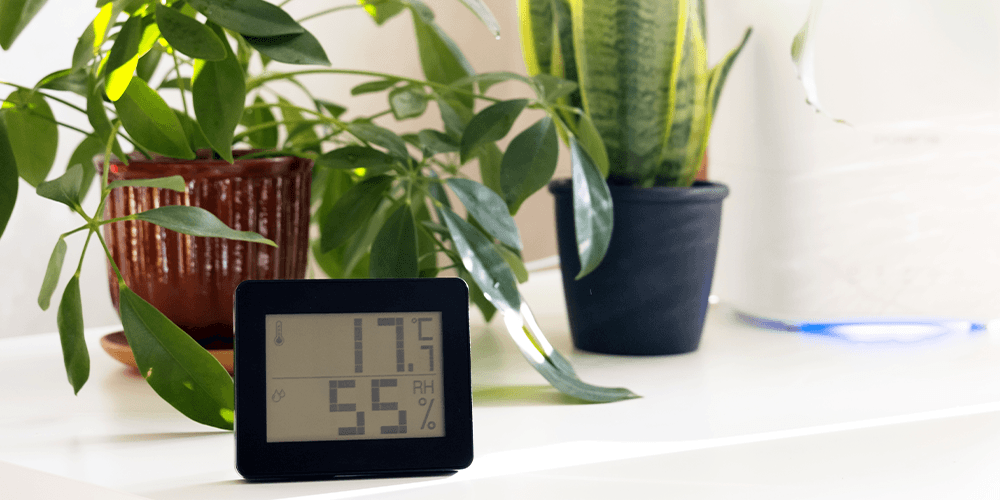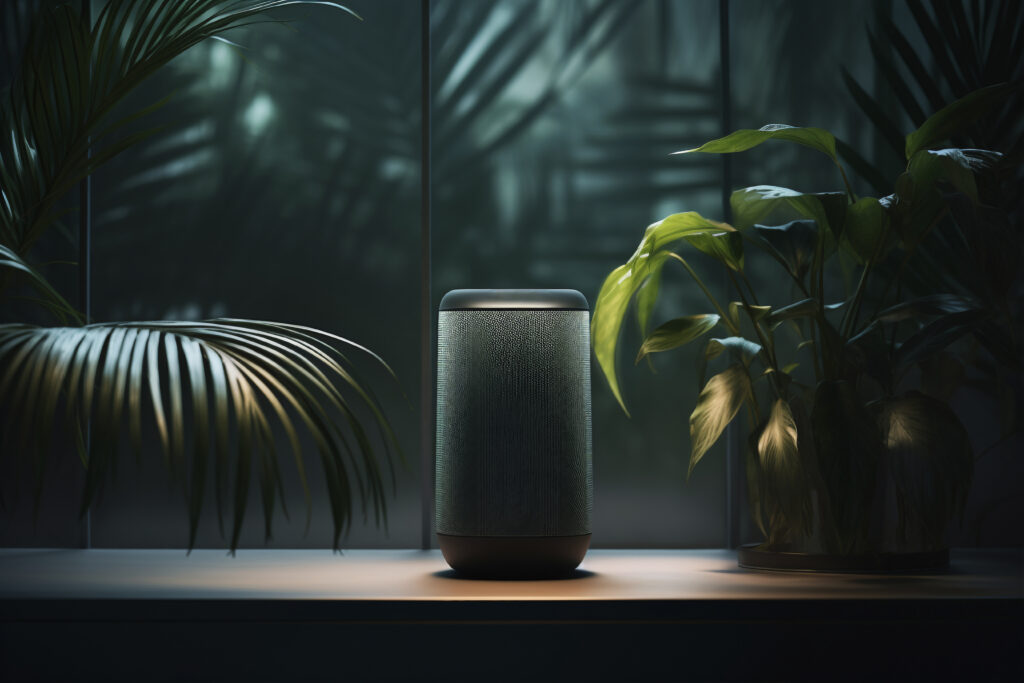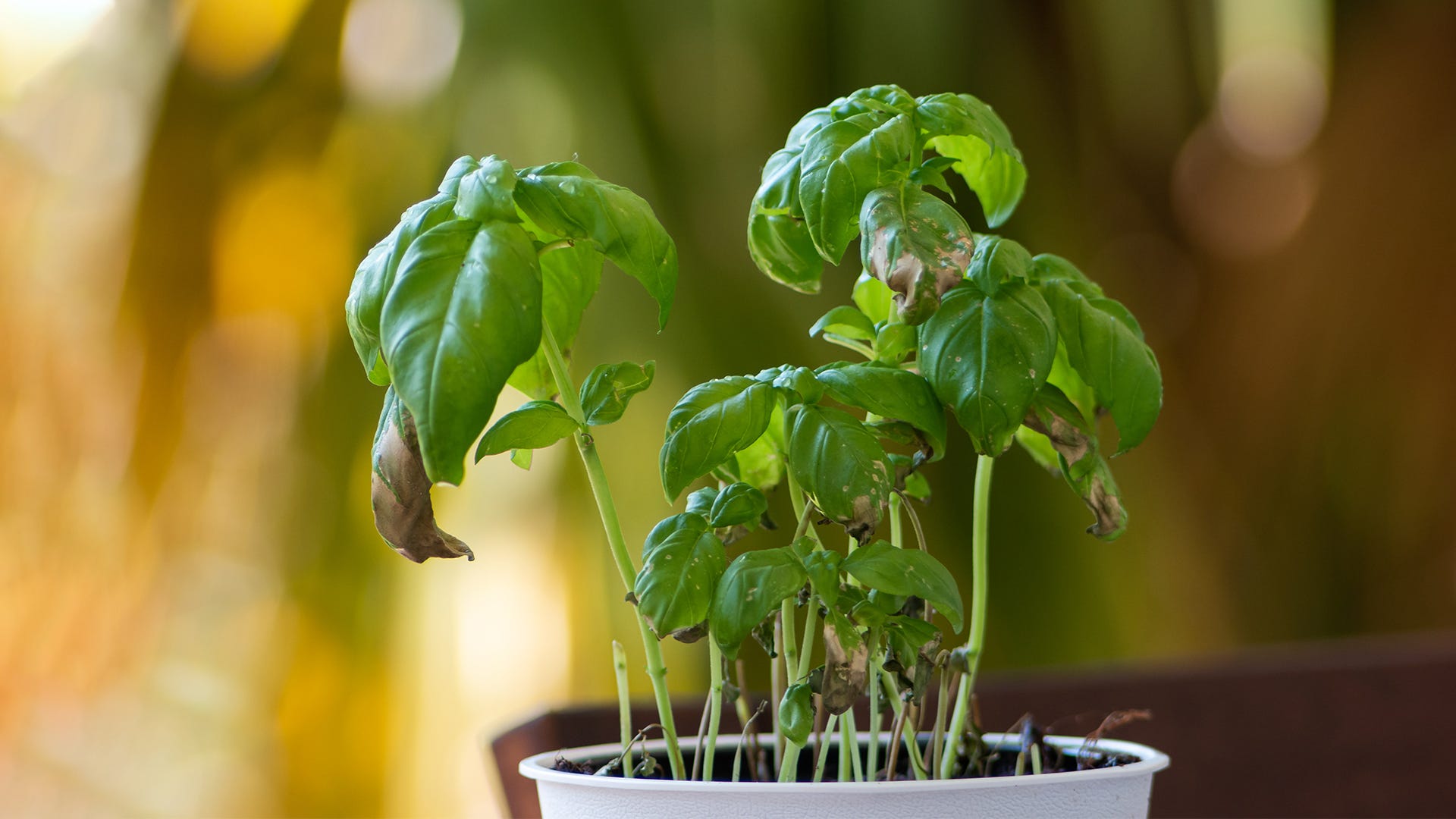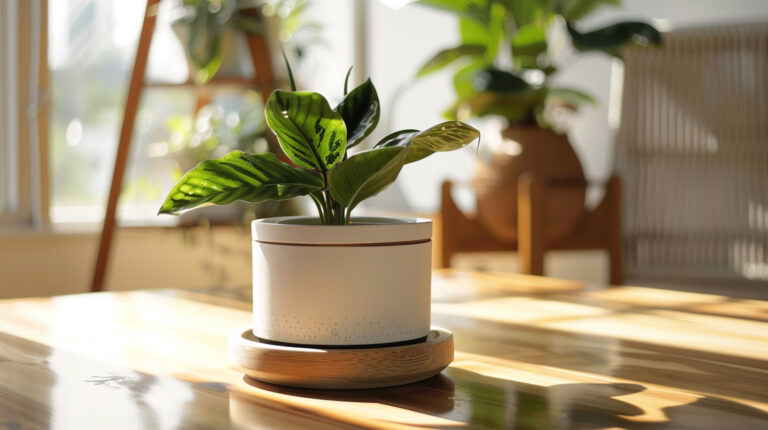Contents
Introduction
Maintaining the right humidity levels is crucial for keeping your apartment plants happy and healthy. If you’ve ever noticed your plants getting crispy leaves, wilting, or developing mold, it might not just be a case of over or under-watering. Humidity, or the amount of moisture in the air, plays a significant role in how well your plants thrive.
In an apartment, achieving the perfect humidity can be a bit tricky. Unlike a house with a yard or a garden, apartments often have less natural air circulation and can be subject to dry heating systems or overly air-conditioned environments. These factors can create a less-than-ideal environment for your green friends. Understanding and managing humidity can make a huge difference in keeping your plants vibrant and growing strong.
So why should you care about humidity? Well, just like people, plants have their preferences. Some plants, like tropical varieties, love a moist environment and will show their gratitude with lush, healthy growth. On the other hand, succulents and cacti prefer drier air and can suffer if the humidity is too high. By maintaining the right humidity levels, you can prevent common problems like leaf drop, mold, and stunted growth, ensuring your indoor garden thrives.
In this guide, we’ll walk you through everything you need to know about keeping your apartment’s humidity just right for your plants. We’ll cover the basics of why humidity matters, how to measure it, and simple methods to both increase and decrease humidity as needed. We’ll also look at seasonal tips and special considerations for different types of plants. Whether you’re a seasoned plant lover or just starting out, this guide will help you keep your green companions in top shape. Let’s dive in and make sure your indoor jungle is a thriving one!
Understanding Humidity and Its Impact on Plants
Let’s break down what humidity is and why it’s such a big deal for your plants. Simply put, humidity is the amount of moisture in the air. Think of it like the “wetness” in the air around us. For us, it might be the difference between a dry, cool winter day and a muggy summer afternoon. For your plants, it’s a bit more crucial.
Different plants have different “humidity tastes.” Some, like the lush ferns or exotic orchids, come from tropical climates where the air is naturally humid. These plants absolutely love a moist environment. If the air in your apartment is too dry, you might see these plants getting crispy edges on their leaves or even drooping. They’re basically asking for a bit more moisture to stay happy and healthy.
On the flip side, some plants are from arid regions and prefer dry conditions. Succulents and cacti, for example, come from places where the air is often quite dry. These guys don’t need a lot of extra moisture in the air. In fact, too much humidity can lead to problems like mold or rot. They’re more comfortable with a dry environment, so you need to make sure the air isn’t too moist for them.
So, how do you know if your apartment’s humidity is right? Here’s where it gets a bit technical, but stick with me. The ideal humidity levels for most indoor plants generally fall between 40% and 60%. If it’s too high or too low, your plants might show some signs that something’s not quite right. For example, if the humidity is too low, you might notice leaves turning brown or falling off. If it’s too high, you could see mold growing on the soil or leaves.
Understanding these basics can help you create the perfect environment for your plants. You’ll be able to adjust your home’s humidity to keep them looking their best and avoid common issues that come with improper humidity levels. Let’s explore how to measure humidity and what you can do to make sure it’s just right for your indoor garden.
Measuring Humidity Levels
Alright, now that you know why humidity is crucial for your plants, let’s dive into how you can measure it. Don’t worry, it’s not as complicated as it might sound! Knowing the humidity levels in your apartment will help you make the right adjustments to keep your plants happy.

First up is the hygrometer, your best friend in this process. A hygrometer is a simple device that measures the amount of moisture in the air. You can find them online or at garden stores, and they come in various types—digital or analog. Digital hygrometers often come with extra features, like temperature readings and easy-to-read displays, while analog ones are usually dial-based and can be quite reliable.
Using a hygrometer is straightforward. You place it in the area where your plants are, and it will give you a reading of the current humidity level. Most hygrometers have a range that covers the humidity levels most plants need, so you can easily see if your environment is too dry or too moist.
How often should you check the humidity? Ideally, you should keep an eye on it regularly, especially if you notice any changes in your plants’ health. Checking once a week is a good rule of thumb. If you’re dealing with seasonal changes—like switching from heating in the winter to cooling in the summer—you might need to check more frequently to keep up with the changes in your apartment’s humidity.
What are the ideal humidity levels? For most indoor plants, you’re aiming for a range between 40% and 60%. Some plants, especially tropical ones, might prefer it on the higher end of that scale. If you find that your hygrometer is reading outside this range, don’t worry. There are plenty of easy ways to adjust your humidity levels, which we’ll cover in the following sections.
So, grab a hygrometer and start measuring! It’s a simple step that can make a big difference in your plant care routine. With the right humidity levels, your plants will be much happier and healthier.
Methods to Increase Humidity
If you’ve found that the humidity in your apartment is on the lower side, don’t fret! There are several effective and straightforward methods to boost the moisture levels in the air and create a more plant-friendly environment. Let’s explore some of the best ways to give your plants the humidity they crave.
Humidifiers
A humidifier is like a magic machine that adds moisture to the air. There are different types to choose from:

- Cool Mist Humidifiers: These are great for adding moisture without warming the air. They use ultrasonic technology or evaporation to create a fine mist. Cool mist humidifiers are ideal for tropical plants that love a bit of extra moisture in the air.
- Warm Mist Humidifiers: These devices heat water to create steam, which then cools slightly before being released into the air. They’re useful for adding both warmth and moisture, which can be beneficial in colder climates or during the winter.
- Ultrasonic Humidifiers: These use high-frequency vibrations to produce a cool mist. They’re usually very quiet and efficient, making them a popular choice for indoor gardening.
When choosing a humidifier, think about the size of your apartment and the needs of your plants. Larger spaces or more plants might require a bigger unit, while a small desktop model might be sufficient for a few plants.
Pebble Trays
A pebble tray is a simple and effective way to increase humidity around your plants. Here’s how to set one up:
- How to Create a Pebble Tray: Fill a shallow tray or dish with pebbles or gravel. Add water to the tray until it just reaches the top of the pebbles. Place the tray near your plants, making sure the plant pots are sitting on the pebbles and not in the water. As the water evaporates, it will increase the humidity around your plants.
Pebble trays are particularly useful for plants that prefer higher humidity, and they’re an easy DIY solution that doesn’t require a lot of equipment. Just make sure to keep an eye on the water level and refill as needed.
Grouping Plants
Grouping your plants together can help create a mini-humidity bubble. Here’s why:
- How Plant Grouping Increases Humidity: When plants are close together, they release moisture through a process called transpiration. This added moisture can help raise the humidity level in the immediate area, benefiting all the plants in the group.
If you have a variety of plants that thrive in higher humidity, consider placing them close together. Just be mindful of their light and space needs to avoid overcrowding.
Misting Plants
Misting is another easy way to boost humidity, especially for plants that enjoy a bit of extra moisture:
- Proper Misting Techniques: Use a spray bottle to lightly mist your plants. Aim for a fine mist rather than soaking the leaves. Mist your plants in the morning or early afternoon to allow the leaves to dry before nighttime, which helps prevent mold and mildew.
- Considerations for Different Plant Types: Not all plants need misting. Tropical plants and those with large, broad leaves usually benefit from a bit of mist, while succulents and cacti prefer drier conditions. Be sure to check the specific needs of your plants before you start a misting routine.
With these methods, you can easily increase the humidity in your apartment and create a more comfortable environment for your plants. Whether you opt for a humidifier, pebble tray, plant grouping, or misting, your plants will thank you with lush, healthy growth!
Methods to Decrease Humidity
If you find that your apartment is too humid, which can cause issues like mold or mildew on your plants, don’t worry—there are several easy ways to reduce the moisture in the air. Let’s explore some practical methods to lower humidity levels and keep your plants and apartment comfortable.
Improving Air Circulation
Good air circulation can help reduce excess moisture in the air:
- Using Fans: Placing a fan in the room can help move air around and prevent the buildup of humidity. Position a fan so that it circulates air around your plants without directly blowing on them. This helps to keep the air moving and can reduce the chance of humidity-related problems.
- Ventilation Tips: Open windows and doors when possible to let fresh air in. If you have a bathroom or kitchen fan, use them to help vent out excess moisture, especially after cooking or showering. Good ventilation helps maintain a balanced humidity level.
Dehumidifiers
A dehumidifier is a device designed to remove excess moisture from the air:
- Types and Function: Dehumidifiers come in various types, including compressor and desiccant models. Compressor dehumidifiers are common and work by cooling air to condense moisture, while desiccant dehumidifiers use materials that absorb moisture.
- Selecting the Right Dehumidifier: Choose a dehumidifier based on the size of your space and your humidity needs. If you have a small apartment, a compact unit might be sufficient. For larger areas or persistent humidity issues, a more robust model might be necessary. Check the product’s capacity to ensure it matches the space you need to dehumidify.
Proper Watering Techniques
Overwatering can contribute to high humidity levels, so adjusting your watering routine is essential:
- Avoid Overwatering: Make sure you’re not giving your plants too much water. Check the soil moisture before watering—most plants prefer to dry out a bit between waterings. Using pots with drainage holes helps excess water escape, preventing soggy soil that can lead to higher humidity and potential root problems.
- Drainage Solutions: Ensure your plant pots have proper drainage to allow excess water to escape. Use well-draining soil and consider adding materials like perlite or sand to improve drainage. This helps reduce moisture buildup in the soil and lowers the overall humidity around your plants.
By implementing these methods, you can effectively manage and reduce humidity in your apartment, creating a more balanced environment for your plants. Whether you use fans, dehumidifiers, or adjust your watering habits, keeping humidity in check will help prevent problems and keep your indoor garden thriving.
Seasonal Considerations
As the seasons change, so do the humidity levels in your apartment. Different times of the year can bring varying levels of moisture, and it’s important to adjust your humidity control methods accordingly. Let’s look at how to manage humidity throughout the year to keep your plants in top shape.
Winter Humidity Challenges
Winter can be tough for indoor plants because of the dry air that comes with heating systems:
- Indoor Heating Effects: Central heating or space heaters can make the air inside your apartment very dry, which is not ideal for many plants. This lack of moisture can cause issues like leaf drop or brown edges on leaves. To combat this, consider using a humidifier to add moisture to the air and keep it at a more comfortable level for your plants.
- Adjusting Humidity Measures in Winter: In addition to using a humidifier, you can place a few water trays around your home or near your plants to help increase humidity. Keep an eye on the moisture levels and adjust your humidifier settings as needed to maintain the ideal range for your plants.
Summer Humidity Adjustments
In the summer, humidity levels can rise, sometimes leading to problems like mold or mildew:
- High Humidity Concerns: Warm, humid weather can cause excess moisture to build up around your plants. This can lead to issues such as mold on the soil surface or leaf spots. To manage this, use a dehumidifier to keep the humidity levels in check. Also, ensure good air circulation around your plants by using fans or opening windows to help reduce excess moisture.
- Cooling and Humidity Control: When using air conditioning, be mindful that it can sometimes make the air too dry. Balancing cooling with proper humidity levels is key. You might need to adjust the settings on your dehumidifier or use a small humidifier if the air becomes too dry. Regularly monitor the humidity levels to ensure they stay within the ideal range for your plants.
By keeping an eye on seasonal changes and adjusting your humidity control methods accordingly, you can ensure that your plants remain healthy and happy throughout the year. Whether it’s adding moisture during the dry winter months or managing excess humidity in the summer, these seasonal adjustments will help your indoor garden thrive.
Special Considerations for Different Plant Types
Different plants have unique humidity needs, and understanding these needs can help you provide the best care for your indoor garden. Let’s explore how to tailor your humidity management to suit various types of plants.
Tropical Plants
Tropical plants are all about high humidity, as they originate from lush, moist environments:
- Humidity Needs: Plants like ferns, orchids, and calatheas thrive in a humid atmosphere. They generally prefer humidity levels on the higher end of the scale, often between 50% and 70%. If the air in your apartment is too dry, these plants might show signs like leaf curling or browning.
- How to Care for Tropical Plants: To keep these plants happy, consider using a humidifier or placing pebble trays near them. Misting them occasionally can also help, but make sure not to overdo it to avoid mold growth. Grouping tropical plants together can create a microenvironment with higher humidity, benefiting all the plants in the cluster.
Succulents and Cacti
Succulents and cacti are built for dry conditions and can struggle with too much moisture:
- Low Humidity Tolerance: These plants come from arid regions where humidity is low. They prefer dry air and can suffer if the humidity is too high, leading to issues like root rot or mold.
- How to Care for Succulents and Cacti: Ensure they’re placed in a well-ventilated area and avoid using a humidifier near them. Overwatering is a common issue with these plants, so make sure their soil dries out completely between waterings. Choosing pots with good drainage and using soil that promotes quick drying can help manage excess moisture.
Fern and Moss Varieties
Ferns and mosses thrive in high humidity environments, making them quite particular about their surroundings:
- High Humidity Preferences: These plants often come from damp, shaded environments where humidity levels are high. They typically need a humidity range between 50% and 70% to flourish.
- How to Care for Ferns and Mosses: Keep these plants in areas with higher humidity or use a humidifier to maintain the right levels. Regular misting can also be beneficial. Ensure they’re not placed in direct sunlight, which can dry them out too quickly.
By adjusting your humidity management strategies based on the specific needs of your plants, you’ll create a more suitable environment for each type. This personalized care helps ensure that your indoor garden remains lush, healthy, and thriving.
Troubleshooting Common Issues
Even with the best care, you might encounter some common humidity-related problems with your plants. Here’s how to troubleshoot and resolve these issues to keep your plants healthy and thriving.
Excessive Moisture and Mold
Excess moisture in the air can lead to mold and mildew, which can be harmful to both your plants and your home:
- Identifying Mold: Look for signs of mold on the soil surface or on plant leaves. Mold can appear as fuzzy, white, or gray spots. It’s usually a sign that the humidity is too high or that there’s poor air circulation around your plants.
- Addressing Mold Issues: To combat mold, first, reduce the humidity levels using a dehumidifier or by improving air circulation with fans. Remove any moldy leaves or soil, and avoid watering plants too frequently. Ensure your pots have good drainage and that you’re not overwatering.
Dry Leaves and Stunted Growth
When plants are exposed to low humidity, they can show signs of stress such as dry, crispy leaves or slow growth:

- Identifying Dryness: Check for symptoms like leaf edges turning brown, crispy texture, or leaves dropping off. These are common indicators that the air is too dry for your plants.
- Correcting Low Humidity Problems: Increase the humidity around your plants by using a humidifier, placing water trays near them, or grouping them together. Regular misting can also help, but make sure to do it in moderation to avoid other problems. Adjust your watering schedule to ensure that you’re not under-watering or over-watering, which can also contribute to plant stress.
By identifying these common issues and addressing them promptly, you can maintain a healthier environment for your plants. Regular monitoring and adjustments to humidity levels will help you keep your indoor garden in top shape and prevent many of the problems associated with improper humidity.
Conclusion
Maintaining the right humidity levels for your apartment plants is crucial for their overall health and growth. With the right approach, you can create an environment that helps your plants thrive, whether they’re tropical beauties, resilient succulents, or delicate ferns. Here’s a quick recap of the key points to keep in mind:
- Why Humidity Matters: Humidity affects how well your plants grow and stay healthy. Too much or too little moisture in the air can lead to problems like mold, leaf drop, or stunted growth.
- Measuring Humidity: Use a hygrometer to regularly check the moisture levels in your apartment. Aim for a range of 40% to 60% for most plants, adjusting based on their specific needs.
- Increasing Humidity: Use humidifiers, pebble trays, and misting to boost humidity. Grouping plants together can also help create a mini-humidity bubble.
- Decreasing Humidity: Manage excess moisture with fans, dehumidifiers, and proper watering techniques. Good air circulation and drainage are key to preventing high humidity issues.
- Seasonal Adjustments: Be mindful of how seasonal changes affect humidity levels. In winter, heating can dry the air, while summer might bring excessive moisture. Adjust your humidity control methods accordingly.
- Special Plant Needs: Different plants have different humidity preferences. Tropical plants need higher humidity, succulents and cacti prefer dry air, and ferns and mosses thrive in moist conditions.
Remember, keeping your plants happy and healthy is all about understanding their needs and making small adjustments to create the right environment. With a bit of effort and the right tools, you can ensure your indoor garden flourishes throughout the year.
Encouragement for Experimentation
Don’t be afraid to experiment with different methods to find what works best for your plants. Every home is unique, and what works for one plant might not work for another. Keep an eye on your plants, adjust as needed, and enjoy the process of nurturing your indoor garden.
Additional Resources
For more information on plant care and humidity management, check out some recommended products like hygrometers and humidifiers, and explore further reading to deepen your understanding of indoor gardening. With the right knowledge and tools, you’ll be well on your way to creating a thriving indoor oasis for your plants.



